All About Casement Windows
Posted
on August 8, 2017
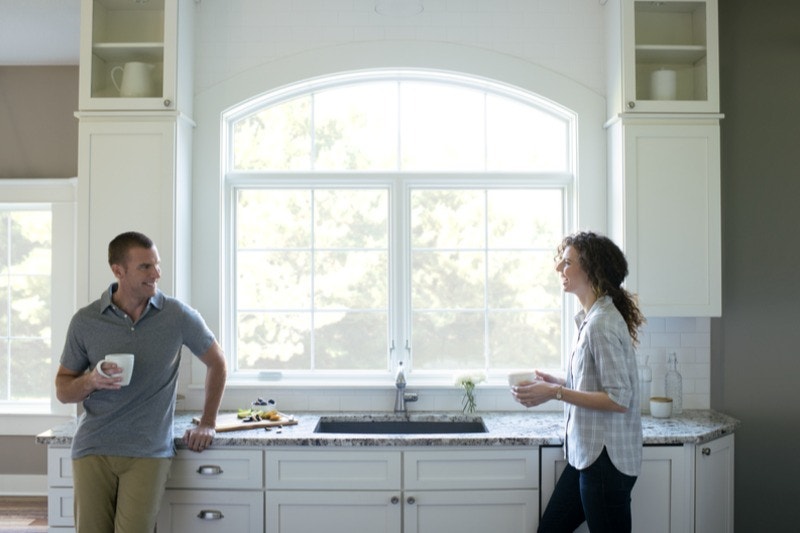
Although double or single hung windows are a great standby for any home, the benefits of casement windows make them an exceedingly popular choice. What are casement windows? If you aren’t familiar, casement windows are those that crank open outward on a hinge, rather than sliding vertically or horizontally. Casement windows are a great choice for homeowners who want to have an unobstructed view because unlike double-hung or sliding sash windows, they have no center rail.
Learn more about the benefits of casement windows, as well as the different available styles below, so you can make the most of your next window replacement.
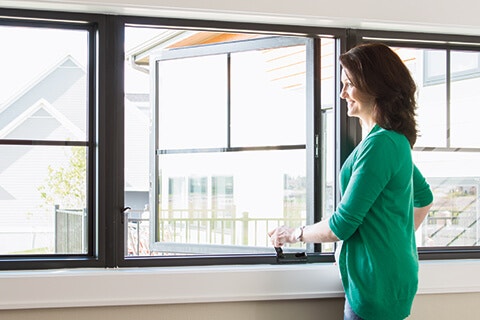
Letting the air in
When it comes to casement windows, one feature to keep in mind is air flow. Their unique hinged design makes them great at capturing the air that travels along the outside of your home, “scooping” it inwards for a refreshing breeze. The entire sash (part of the window that opens and closes) opens, allowing for ventilation across the entire open area – where as double-hung window sashes can slide upwards from the bottom of the window or downwards from the top, but the sash will still cover a portion of the window opening. This makes casements a great style option for homeowners who enjoy having windows open, or for rooms that can benefit from additional ventilation, like kitchens or bathrooms.
Casement windows are also a great option during cooler months. Because they have one sash to seal (rather than two), they will typically have slightly lower air leakage (the measurement of how much air will enter a room through a product). When strong winds blow against a casement window, it presses the window against the frame and the window's seal.
Beyond temperature control and ventilation, casement windows are easy to clean, simple to operate, and come in a variety of styles that can change the way they look, operate, and control airflow. See what casement window styles you can choose from below.
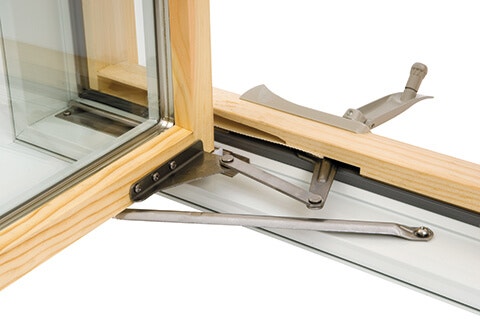
Consider the Options
Since they are hinge-operated, some customers may have a concern about the ease of operation for larger casement windows. At Pella, sizes are available in a wide range as well as custom built products, and you can be confident in their smooth operating ability. Be sure to contact a professional to ensure proper size ordering.
Double casement windows, sometimes referred to as French casement windows, have two sashes that open from the center with no center stile, offering a wide, unobstructed view. This custom option is hinged on each side and can operate either with a single easy-to-reach handle or they are also available in a “push-out” style (you use your hands to push the sashes away from the frame, instead of a crank).
French Casement windows and other additional custom configurations for casement windows are available as specialty windows. To discuss unique window configurations, contact your local showroom.
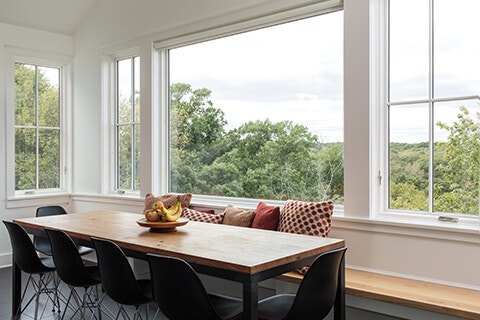
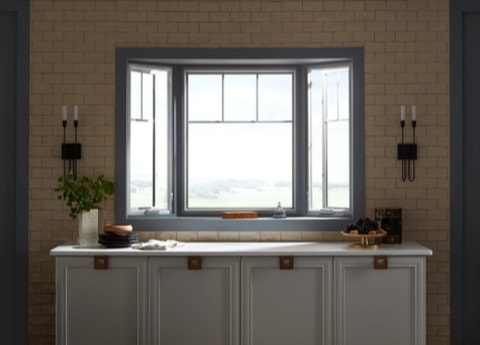
Where to use casement windows
Casement windows are hinged at the sides and swing outward. They provide a clear view to the outdoors plus open and close easily with the turn of a handle. This style is a good choice for dark spaces in need of natural light and spots that are difficult to reach.
Best uses for casement windows:
- Difficult to reach areas, like over a kitchen sink
- Areas where unobstructed views are important, and ventilation is desired
- Flanking a picture window to add ventilation to a large window configuration
- Commonly used in bay or bow window configurations
- Can be found in a more contemporary style home (due to their small “sightlines” and an unobstructed view).
The Right Choice for you?
Although casement windows are a great choice in many homes, they are not for everyone. For instance, if you have a home without central air and need to use a window air conditioner, casement windows may not be the best choice. Another consideration when looking at casement windows is that the screens are located on the roomside, rather than the outside as commonly seen in sliding and double-hung windows. This makes them easier to keep clean, but keep in mind that you’ll need to remove them to clean your roomside window glass.
If you find yourself in need of a bit more fresh air running through your home, or just want to add a new visual element to your windows, casement might be the way to go. Even if you are replacing more common single or double hung windows, switching to a different option could be something to consider. Get in touch with the Pella team for more information, and find more ways that this unique style can meet your needs.
Schedule a free consultation to find windows and doors for your home.
